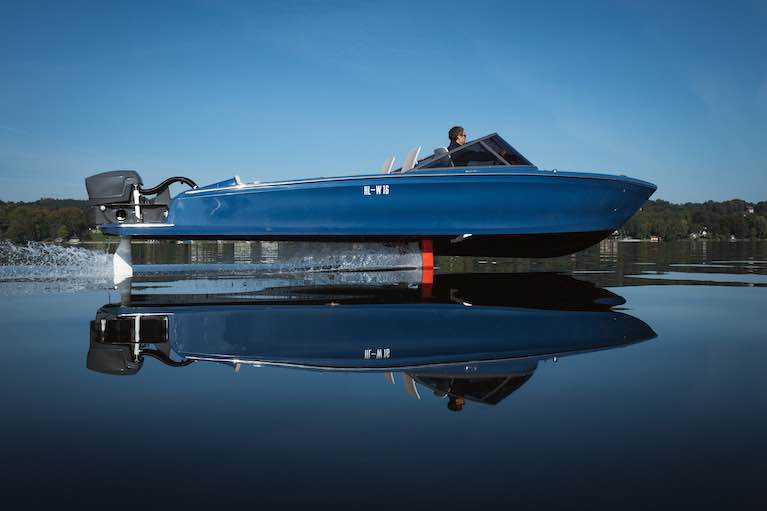Billed as the world’s first electric hydrofoil speedboat, the Candela Seven has been brought to market by Swedish startup, Candela Speed Boat.
Propelled by the Torqeedo Deep Blue 50i electric outboard engine the boat cruises above the water, its weight rested on two hydrofoils. The vessel has a top speed of 55 km/h and a range of 92 km when driven at 37 km/h.
“The Candela Seven combines minimum energy consumption with maximum performance,” says Dr Ralf Plieninger, Managing Director of Torqeedo. “The electric hydrofoil is a game-changer for marine electric mobility.”
The Candela Seven’s development has been driven by Candela Speed Boat’s CEO, Gustav Hasselskog, who wanted to know if it was possible to combine modern electric motors with the hydrofoils that are now standard equipment in much competitive sailboat racing.
A leader in electric drives for watercraft up to 120-feet, Torqeedo was founded to solve similar problems. “Even though we’ve grown a lot since then,” says Plieninger, “we’ve held onto our start-up culture. We enjoy solving problems and doing things differently.”
 Torqeedo's deep blue electric engine unit
Torqeedo's deep blue electric engine unit
The Candela Seven is 7.7 metres long and seats six. Its Deep Blue electric motor accelerates the boat smoothly until the vessel reaches 27km when it rises out of the water onto its hydrofoils. “The energy consumption drops 80 per cent in hydrofoil mode—that gives us a range similar to a gasoline engine,” says Hasselskog. It’s said the boat runs very smoothly on its hydrofoils with no slamming into waves, and no noise.
 The flying Candela Seven Photo: Christian Brecheis
The flying Candela Seven Photo: Christian Brecheis
The Candela Seven’s design is based on insights from the field of aeronautics. The hull and deck are made of carbon fibre and weigh 180 kg. At a total weight of 1300 kg, the Candela Seven is thirty per cent lighter than a conventional fibreglass boat.
Candela has also developed a ‘flight control’ system with multiple sensors that supply it with GPS, sonar, and engine data. The system then mechanically adjusts the main and aft foils on the fly. This is designed to keep the boat steady in heavy waves or during sharp turns. And if travelling through shallow water, the hydrofoils retract by tapping the touch screen.


























































